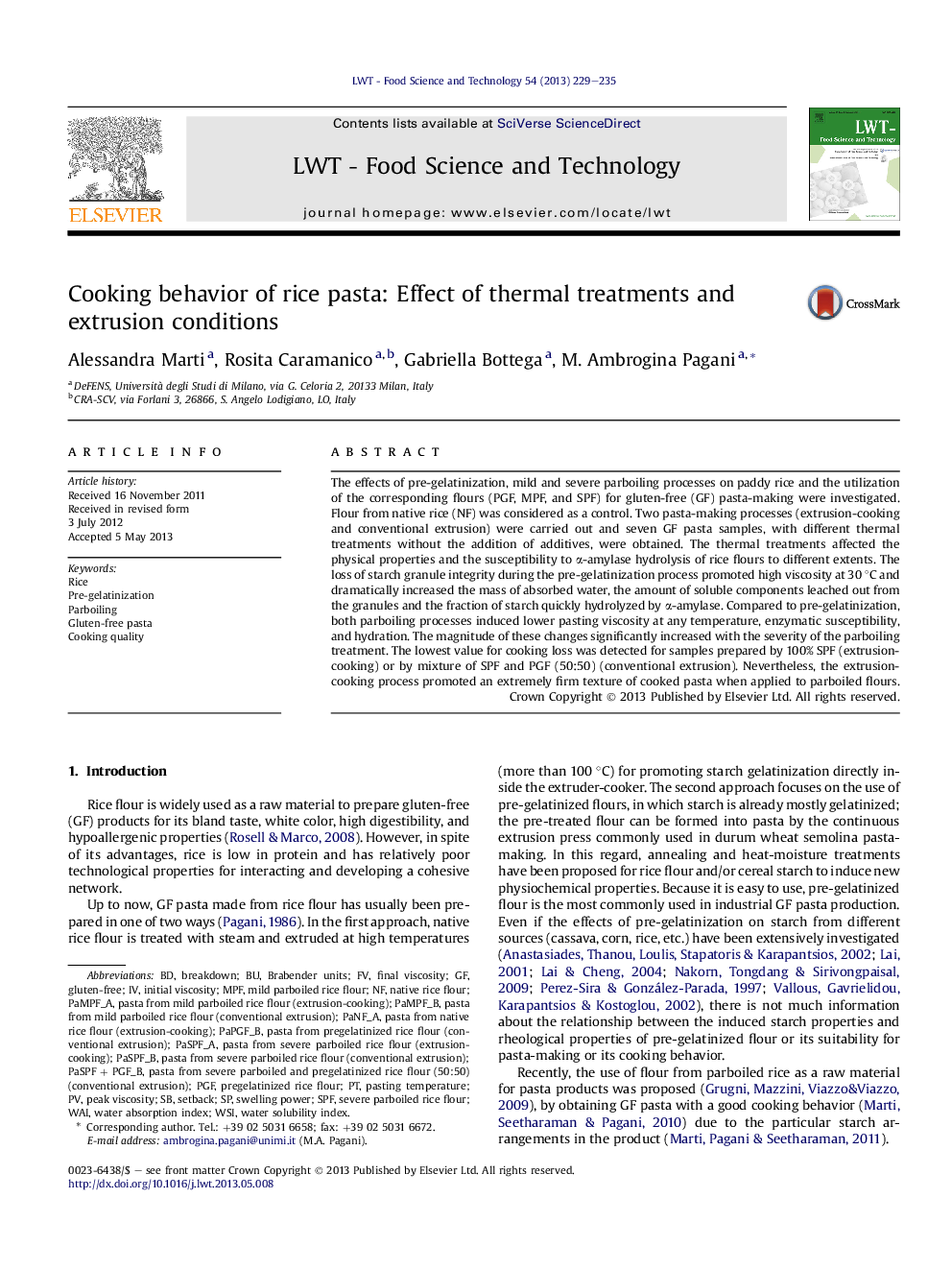| Article ID | Journal | Published Year | Pages | File Type |
|---|---|---|---|---|
| 6404228 | LWT - Food Science and Technology | 2013 | 7 Pages |
â¢Changes of physical properties of rice flours according to thermal treatments.â¢Suitability of different thermal treated rice flours for making gluten-free pasta.â¢Starch properties and cooking behavior of rice pasta.â¢Severe parboiling and extrusion-cooking would improve pasta cooking quality.
The effects of pre-gelatinization, mild and severe parboiling processes on paddy rice and the utilization of the corresponding flours (PGF, MPF, and SPF) for gluten-free (GF) pasta-making were investigated. Flour from native rice (NF) was considered as a control. Two pasta-making processes (extrusion-cooking and conventional extrusion) were carried out and seven GF pasta samples, with different thermal treatments without the addition of additives, were obtained. The thermal treatments affected the physical properties and the susceptibility to α-amylase hydrolysis of rice flours to different extents. The loss of starch granule integrity during the pre-gelatinization process promoted high viscosity at 30 °C and dramatically increased the mass of absorbed water, the amount of soluble components leached out from the granules and the fraction of starch quickly hydrolyzed by α-amylase. Compared to pre-gelatinization, both parboiling processes induced lower pasting viscosity at any temperature, enzymatic susceptibility, and hydration. The magnitude of these changes significantly increased with the severity of the parboiling treatment. The lowest value for cooking loss was detected for samples prepared by 100% SPF (extrusion-cooking) or by mixture of SPF and PGF (50:50) (conventional extrusion). Nevertheless, the extrusion-cooking process promoted an extremely firm texture of cooked pasta when applied to parboiled flours.
